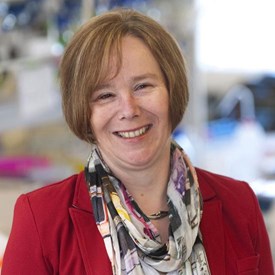Sheena Radford Seminar

“Rare events and increasing opportunities: Towards combating amyloid disease"
Delivered by Professor Sheena Radford, Astbury Centre for Structural Biology, University of Leeds
REGISTER NOWLink opens in a new window
Sheena Radford is a biophysicist who investigates protein folding — the process by which a protein reaches the unique three-dimensional structure that allows it to perform its function. Sheena’s research is helping to reveal fine details about this process in both lab-isolated proteins and living cells, as well as determining how incorrectly folded proteins can lead to disease. Read more about Sheena's workLink opens in a new window
Thursday 12 May 2022
16.00 BST, followed by a drinks reception at 17.00
IBRB Lecture Theatre, Gibbet Hill Campus

Synopsis
The last decades have seen astounding increases in our knowledge of how proteins fold, based on experiments with ever-increasing levels of sophistication, combined with increases in the powers of simulation and computational methods. It is also now clear that proteins can misfold, sometimes frequently during folding and, if misfolding is left unchecked by molecular chaperones, this can result in some of today’s most devastating diseases, including Alzheimer’s and Parkinson’s diseases and Type 2 diabetes. Understanding how proteins misfold and aggregate into amyloid fibrils, and how these aggregating species cause cellular dysfunction and disease, remain significant challenges, as the aggregating species are partly folded, rapidly interconverting and sometimes fleetingly populated. Yet such insights could help devise treatments for these currently incurable disorders.
In this lecture I will describe how we are using different structural and biophysical methods to delineate the mechanisms by which the normally soluble proteins convert into amyloid fibrils. I will show how we have determined the structures of key amyloidogenic intermediates that are on-pathway to amyloid fibrils as well as the structures of the amyloid fibril themselves. Not only is such knowledge transforming our understanding of the conformational conversion of a protein into the amyloid fold at a fundamental level, but we are now exploiting the insights gained to develop small molecules and other strategies to combat amyloid disease.
